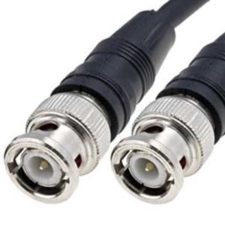-
Read the first part here. Now that I have finished filming all the interviews I can start my editing process. I used Sony Vegas 12 to edit and color correct. The first thing I did when starting my editing process was to sort out all the clips into close ups, wide shots, and b-roll. I had also created a folder for the audio from my H4N Audio Recorder. I then dragged all the video clips into the timeline and paired the wide shot and the close up for each interview. Next, I dragged the rest of the audio clips for each interview into the timeline and paired those up. I made sure everything was synced right. After that I synced the audio and the video together by matching the waveform from the video and audio together. I find it’s easiest to sync clips together by looking for peaks in the …
-
ATTN: Indy Filmmakers How to Sync Audio Easily
February 12, 2015 in Video Editing, Video Production | Comments Off on ATTN: Indy Filmmakers How to Sync Audio Easily
As a filmmaker, shooting with multiple cameras is always a bonus feature because it can cut down the number of shots you need to get in a day. Especially if you use your cameras wisely! However, as an editor myself, I know that syncing up all that audio information from all the takes, shots, and scenes can be a daunting task especially for independent filmmakers where one person does it all. In this tutorial I will show you my method of syncing up audio manually and using Plural Eyes by Red Giant. In my most recent short film, I had the opportunity to film with 4 DSLR cameras. Canon 60D, Mark 3, Mark 2 and the Panasonic GH4. All of them captured audio internally, but obviously they produced poor results. We only used their audio as a scratch track. We set up a proper microphone above the talent and mounted it onto …
-
You’ve shot something, it’s fantastic, and you think it might just make you a YouTube celebrity overnight. However, getting your video ranked on Google as well as YouTube is essential to receiving the most views. YouTube has its own internal search engine, and Google is putting video results at the top of its first page. Google’s algorithms are exceptionally intelligent and always changing, but there are some techniques you can use to take advantage of how search engines work. Here are some tips for search engine optimizing (SEO) your video should include: Use title tags and key words effectively in every video you post. Google reads both of these, but will know if you cheat. For example, if your company offers swimming pool cleaning services and your key words include, “How to clean your swimming pool naked Angelina Jolie Lady Gaga video”, Google will not appreciate it and will rank …
-
What are SDI Signals and BNC Cables?
March 1, 2013 in Video Conversion, Video Editing, Video Production | Comments Off on What are SDI Signals and BNC Cables?
Our article on SDI cables vs. BNC below! We are a video transferring service organization with over 10 years of experience. See what video formats we transfer, for any questions feel free to contact us to learn more. SDI Signal Serial Digital Interface as well as HD-SDI (high definition serial digital interface) are used for the transmission of unencrypted, uncompressed digital video signals. This type of interface is used for broadcasting of both high definition and standard definition signals, while also carrying audio signals along with video signals. Additional information can also be broadcast through this interface, including test signals, content identification and closed captions. It is primarily used in broadcast facilities, and not found at home. At Azure Production, our BetaSP, SX, IMX tapes are all transferred by SDI signals. Learn more about the Serial Digital Interface. BNC Connectors BNC connectors, are cables used for all kinds of radio frequency …
Blog Post Archives
Posts Tagged “video editing”
Load More




